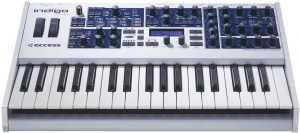Musical Instrument Digital Interference
Introduction MIDI:Musical Instrument Digital Interference It is a standard interfacing language used on all modern digital musical instrument and sequencer. This module focuses on basic theory of MIDI and sequencing and
sampling technique.
THE NEED OF MIDI: Musical instruments only existed as acoustic devices until the discovery of electricity. This led to the creation of electronic musical instruments. Electronic musical instruments were devices that electrically simulated the
sound of real instruments. An example is a keyboard. Modern keyboards can play the sound of almost any
musical instrument and even non-musical sounds. The keyboard is made up two separate sections
- The section with the keys – called the keyboard
- The section with the tones – tone generator or the tone modulator. The tones in the tone module are the different sounds of the different instruments that the electronic keyboard can play. Each sound, for example, the trumpet sound is called a patch
. 
VIRUS INDIGO ACCESS
MIDI MESSAGES ARE OF TWO TYPES 1) Channel Messages 2)System Messages
Channel Message:Channel Messages are those that carry specific MIDI channels. These MIDI channel numbers range from binary 0 to 15 but are commonly referred to as MIDI Channel 1 to 16. In binary form, the channel numbers are in the form of 4 binary digits as part of the status byte. The other 4 bits of the status byte specify different types of Channel Messages. The status byte is then followed by one or more data bytes
Channel Voice Message: Channel Voice Messages are ones that most directly concerned with the music being recorded and played.The most common Channel Voice Messages are:Note On,Note Off,Program Change ,Control Change Pitch bend, Polyphonic Aftertouch ,Channel Aftertouch.
Velocity information:Note messages are associated with a velocity byte, and this is used to represent the speed at which a key was pressed or released. The former will correspond to the force exerted on the key as it is depressed: in other words, ‘how hard you hit it’ (called ‘note on velocity’). It is used to control parameters such as the volume or timbre of the note at the audio output of an instrument, and can be applied internally to scale the effect of one or more of the envelope generators in a synthesiser.Total 128 velocity state can be possible
Active Sense: Active Sense is a type of MIDI message (i.e, that travels over your MIDI cables just like note data or controller data). It’s used to implement a “safety feature”. It canrovide an automatic “MIDI panic” control that will cause
stuck notes and other undesirable effects to be resolved whenever the MIDI connection in between modules is broken or impeded in some way.Here’s how Active Sense works.Assume that you have two sound modules daisy-chained to the MIDI OUT of a keyboard controller. Let’salso say that all three units implement Active Sense. Ifyou aren’t playing the controller at any given moment(and therefore the controller isn’t sending out MIDI data),
DAISY CHAINING Daisy chaining mainly this technique is used if we at a time want to use two or more MIDI at a time there we use daisy chaining basically we will have one master MIDI where we trigger different note and produce tune if we want to listen same sound from two more MIDI then we can play it out of other midi also ,the other two midi are called SLAVE , so in this case we have slave 1 and slave 2 (midi1 and midi 2)
WORKING OF DAISY CHAINING In case 1 when we play first Master midi then sound comes out of the monitor of Master midi 1 same time when we Thru (Output point backside of midi) , so through input of Slave1 we can listen whatever we are playing in Master ,then when experiment is done on the sound which is coming from Master on Slave1 so by using output of Slave 1 we send it to Slave 2 input thus here we listen experimented sound on Slave2 Monitor output. Every MIDI have 3 points backside – IN /OUT/ THRU (Thru is basically sending a copy of a signal)
The Advantages of MIDI
There are two main advantages of MIDI — it’s an easily edited/manipulated form of data, and also it’s a compact form of data (i.e, produces relatively small data files).Because MIDI is a digital signal, it’s very easy to interface electronicinstruments to computers, and then do things with that MIDI data on the computer with software. For example, software can store MIDI messages to the computer’s disk drive.
The great advantage of Musical Instrument Digital Interference is that the “notes” and other musical actions, such as moving the pitch wheel, pressing the sustain pedal, etc, are all still separated by messages on different channels. So the musician can store the messages generated by many instruments in one file, and yet the messages can be easily pulled apart on a per instrument basis because each instrument’s Musical Instrument Digital Interference messages are on a different MIDI channel.More data of larger file size can be stored in kb which is very less size, quality remains as it is .

